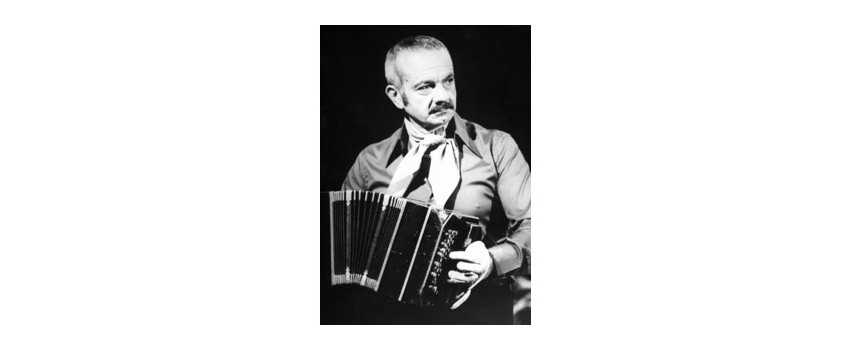Piazzolla, Le Grand Tango for Cello And Piano (Berben)
Le Grand Tango for Cello and piano by Piazzolla
Astor Piazzolla, born on March 11, 1921, in Argentina, was a renowned Tango composer and bandoneon player who revolutionized the traditional tango into a modern fusion of jazz and classical music. His innovative compositions and unique musical style made him a prominent figure in the world of music. Piazzolla's journey from his early life in Argentina to his international acclaim is a testament to his exceptional talent and determination.
Early Life and Musical Beginnings
Born in Argentina, Astor Piazzolla spent his formative years in New York City. During this time, he immersed himself in music and learned several languages, including Spanish, English, French, and Italian. Piazzolla's musical journey began when he discovered his passion for the bandoneon, a type of accordion commonly used in tango music. He quickly became a prodigious bandoneon player and started performing famous tango pieces in Argentina.
Musical Training and Exploration
Recognizing Piazzolla's potential, pianist Arthur Rubinstein advised him to study under the renowned Argentine composer Alberto Ginastera. This training allowed Piazzolla to delve deeper into his musical education and explore the works of influential composers such as Stravinsky, Bartok, and Ravel. Inspired by these classical masters, Piazzolla briefly departed from tango and experimented with modernist classical compositions.
In 1955, Piazzolla returned to Argentina after receiving a grant from the French government to study in Paris with Nadia Boulanger. It was during this time that he founded the Octeto Buenos Aires, an ensemble dedicated to playing tango music. Piazzolla's return marked a significant turning point in his career as he began to develop his signature style, known as nuevo tango.
Nuevo Tango: A Revolutionary Musical Style
Piazzolla's nuevo tango was a departure from the traditional tango, incorporating elements of fusion, expanded harmonies, dissonance, and counterpoint. He also introduced new instruments, such as the flute, saxophone, acoustic guitar, electronic instruments, and a complete jazz/rock percussion kit, which added a contemporary twist to his compositions. This innovative approach to tango brought a fresh and dynamic sound to the genre.
Throughout his career, Piazzolla collaborated with various ensembles, each showcasing his evolving musical style. From the 1946 Orchestra to the 1989 Sextet ensemble, Piazzolla's compositions and bandoneon mastery were central to these groups. His collaborations extended beyond tango, as he worked with internationally renowned cellists and saxophonists, further expanding the boundaries of his music.
Piazzolla's Notable Compositions
Astor Piazzolla's extensive body of work includes a wide range of compositions, from orchestral pieces to song-form compositions that resonate with audiences to this day. Some of his notable works include the "Concierto para Bandoneon, Orquesta, Cuerdas y Percusion," "Doble-Concierto para Bandoneon y Guitarra," "Tres Tangos Sinfonicos," and "Concierto de Nacar para 9 Tanguistas y Orquesta."
Among his most beloved compositions are "Balada para un loco" and "Adios Nonino," which he recorded multiple times with different musicians and ensembles. These songs, with their emotional depth and captivating melodies, have become timeless classics in the tango genre.
Controversy and Recognition
Astor Piazzolla's innovative approach to tango music, while celebrated internationally, faced opposition in his home country of Argentina. Traditionalists believed that tango should remain unchanged, leading to a divisive reception of Piazzolla's modern interpretation. The Argentine saying "everything may change - except the tango" highlights the resistance he encountered.
However, Piazzolla's music found acceptance in Europe and North America, where his unique fusion of tango, jazz, and classical elements resonated with audiences. His artistic movement aligned with the call for political reforms in certain leftist circles of Argentine culture, further enhancing his reputation as a revolutionary figure.
Legacy and Impact
Astor Piazzolla's influence on the world of music cannot be overstated. His groundbreaking compositions and innovative arrangements have inspired countless musicians and continue to shape the tango genre. Piazzolla's exploration of new musical horizons paved the way for future artists to experiment and push the boundaries of traditional genres.
With over 3,000 published pieces and approximately 500 recorded works, Piazzolla's legacy is a testament to his prolific and enduring contributions to the world of music. His ability to blend diverse musical styles and create a new form of tango solidified his place as one of the most influential composers of the 20th century.
Conclusion
Astor Piazzolla's life and music are a testament to the power of artistic innovation. Through his fusion of tango, jazz, and classical elements, he transformed the traditional tango into a modern and dynamic genre. Despite facing opposition in Argentina, Piazzolla's music found international acclaim and continues to captivate audiences to this day. His legacy as a revolutionary composer and bandoneon player is undeniable, leaving an indelible mark on the world of music.

Le Grand Tango for Cello and piano by Piazzolla